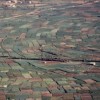 El cultivo en asocio (o cultivo intercalado) es una práctica en donde se siembran diversos cultivos en un mismo campo. Adicionalmente plantas que no son cultivos, tales como las malezas, cultivos rastreros o de cobertura, así como plantas del hábitat, se pueden combinar en el espacio y tiempo para influir en el número de plagas o artrópodos benéficos en un cultivo principal. This 7-page fact sheet was written by Hugh Smith y Oscar Liburd. Traducido por Ana Lucrecia MacVean, and published by the UF Department of Entomology and Nematology, June 2012.
El cultivo en asocio (o cultivo intercalado) es una práctica en donde se siembran diversos cultivos en un mismo campo. Adicionalmente plantas que no son cultivos, tales como las malezas, cultivos rastreros o de cobertura, así como plantas del hábitat, se pueden combinar en el espacio y tiempo para influir en el número de plagas o artrópodos benéficos en un cultivo principal. This 7-page fact sheet was written by Hugh Smith y Oscar Liburd. Traducido por Ana Lucrecia MacVean, and published by the UF Department of Entomology and Nematology, June 2012.
http://edis.ifas.ufl.edu/in932
Author: dihagan
El Virus del Nilo Occidental (ENY6425/IN185)
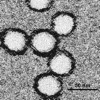 El virus del Nilo Occidental es acarreado por mosquitos y si es transmitido a humanos puede causar una encefalitis severa. Esta relacionado estrechamente con el virus de la encefalitis de St. Louis que a veces es un problema en Florida. El virus del Nilo Occidental fué documentado por primera vez en los Estados Unidos en la ciudad de New York durante una epidemia en 1999. This 4-page fact sheet was written by Jorge Rey, C. Roxanne Connelly, Jonathan F. Day, y Walter J. Tabachnick, and published by the UF Department of Entomology and Nematology, June 2012.
El virus del Nilo Occidental es acarreado por mosquitos y si es transmitido a humanos puede causar una encefalitis severa. Esta relacionado estrechamente con el virus de la encefalitis de St. Louis que a veces es un problema en Florida. El virus del Nilo Occidental fué documentado por primera vez en los Estados Unidos en la ciudad de New York durante una epidemia en 1999. This 4-page fact sheet was written by Jorge Rey, C. Roxanne Connelly, Jonathan F. Day, y Walter J. Tabachnick, and published by the UF Department of Entomology and Nematology, June 2012.
http://edis.ifas.ufl.edu/in185
Stable Fly (Dog Fly) Control (ENY267/IG133)
 The stable fly is a blood-sucking filth fly of considerable importance to people, pets, livestock, and the tourist industry in Florida. Filth flies, including stable flies, exploit habitats and food sources created by human activities, such as farming. Stable flies primarily attack animals for a blood meal, but in the absence of an animal host, they will bite people. This 4-page fact sheet was written by P. E. Kaufman and E. N. I. Weeks, and published by the UF Department of Entomology and Nematology, August 2012.
The stable fly is a blood-sucking filth fly of considerable importance to people, pets, livestock, and the tourist industry in Florida. Filth flies, including stable flies, exploit habitats and food sources created by human activities, such as farming. Stable flies primarily attack animals for a blood meal, but in the absence of an animal host, they will bite people. This 4-page fact sheet was written by P. E. Kaufman and E. N. I. Weeks, and published by the UF Department of Entomology and Nematology, August 2012.
http://edis.ifas.ufl.edu/ig133
An Overview of US Papaya Production, Trade, and Consumption (FE914)
![fe914 Figure 1. US fresh papaya imports by origin, 2002–2011 (metric tonnes [t]). Source: USDA/FAS (2012).](http://edis-news.ifas.ufl.edu/wp-content/uploads/2012/09/fe914-100x100.jpg) The United States produces close to 14,000 t of papaya annually. Consumption of the fruit is on the upswing and the development of new cultivars tolerant to the Papaya Ring Spot Virus encourage many growers in South Florida to taking a second look at producing papaya for the domestic market. This 8-page fact sheet provides information on domestic trends in the production and trade of fresh papaya in the U.S. Also included is a price analysis at the wholesale level for representative markets on the US East and West Coasts. Written by Edward A. Evans, Fredy H. Ballen, and Jonathan H. Crane, and published by the UF Department of Food and Resource Economics, September 2012.
The United States produces close to 14,000 t of papaya annually. Consumption of the fruit is on the upswing and the development of new cultivars tolerant to the Papaya Ring Spot Virus encourage many growers in South Florida to taking a second look at producing papaya for the domestic market. This 8-page fact sheet provides information on domestic trends in the production and trade of fresh papaya in the U.S. Also included is a price analysis at the wholesale level for representative markets on the US East and West Coasts. Written by Edward A. Evans, Fredy H. Ballen, and Jonathan H. Crane, and published by the UF Department of Food and Resource Economics, September 2012.
http://edis.ifas.ufl.edu/fe914
Citrus Mealybug Planococcus citri (Risso) (Insecta: Hemiptera: Pseudococcidae) (EENY537/IN947)
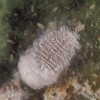 The citrus mealybug is a common pest of citrus primarily in greenhouses, and of several ornamental plants in Florida. It has been recognized as a difficult to control pest in Europe since 1813, where it is called the greenhouse mealybug and in the United States since 1879. This 4-page fact sheet was written by Harsimran Kaur Gill, Gaurav Goyal, and Jennifer Gillett-Kaufman, and published by the UF Department of Entomology and Nematology, September 2012.
The citrus mealybug is a common pest of citrus primarily in greenhouses, and of several ornamental plants in Florida. It has been recognized as a difficult to control pest in Europe since 1813, where it is called the greenhouse mealybug and in the United States since 1879. This 4-page fact sheet was written by Harsimran Kaur Gill, Gaurav Goyal, and Jennifer Gillett-Kaufman, and published by the UF Department of Entomology and Nematology, September 2012.
http://edis.ifas.ufl.edu/in947
Nutrition for Health and Fitness: Fiber in Your Diet (FCS8130/HE697)
 Fiber has many names, such as dietary fiber, total fiber, or just plain fiber. Eating foods that contain fiber is good for your health. This 6-page fact sheet provides tips on how to include foods with fiber in your diet. Written by Linda B. Bobroff, and published by the UF Department of Family Youth and Community Sciences, September 2012.
Fiber has many names, such as dietary fiber, total fiber, or just plain fiber. Eating foods that contain fiber is good for your health. This 6-page fact sheet provides tips on how to include foods with fiber in your diet. Written by Linda B. Bobroff, and published by the UF Department of Family Youth and Community Sciences, September 2012.
http://edis.ifas.ufl.edu/he697
Keeping Food Safe: Choosing and Using Food Thermometers in Homes (FCS1083/HE770)
 Proper cooking of foods to safe internal temperatures is one of the most effective ways to prevent foodborne illnesses. Several types of food thermometers are available for purchase, and choosing the right one when cooking at home will help to keep food safe for your family. This 3-page fact sheet provides specific information on how to use different thermometers in different foods. Written by Claudia L. Peñuela, Amy Simonne, and Isabel Valentin-Oquendo, and published by the UF Department of Family Youth and Community Sciences, March 2012. http://edis.ifas.ufl.edu/he770
Proper cooking of foods to safe internal temperatures is one of the most effective ways to prevent foodborne illnesses. Several types of food thermometers are available for purchase, and choosing the right one when cooking at home will help to keep food safe for your family. This 3-page fact sheet provides specific information on how to use different thermometers in different foods. Written by Claudia L. Peñuela, Amy Simonne, and Isabel Valentin-Oquendo, and published by the UF Department of Family Youth and Community Sciences, March 2012. http://edis.ifas.ufl.edu/he770
Polyphemus Moth Antheraea polyphemus (Cramer) (Insecta: Lepidoptera: Saturniidae: Saturniinae) (EENY531/IN945)
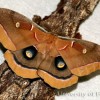 The polyphemus moth, Antheraea polyphemus (Cramer), is one of our largest and most beautiful silk moths. It is named after Polyphemus, the giant cyclops from Greek mythology who had a single large, round eye in the middle of his forehead. The name is because of the large eyespots in the middle of the moth’s hind wings. This 9-page fact sheet was written by Donald W. Hall, and published by the UF Department of Entomology and Nematology, August 2012.
The polyphemus moth, Antheraea polyphemus (Cramer), is one of our largest and most beautiful silk moths. It is named after Polyphemus, the giant cyclops from Greek mythology who had a single large, round eye in the middle of his forehead. The name is because of the large eyespots in the middle of the moth’s hind wings. This 9-page fact sheet was written by Donald W. Hall, and published by the UF Department of Entomology and Nematology, August 2012.
http://edis.ifas.ufl.edu/in945
Warning Signs of Anorexia (FAR8055/FM373)
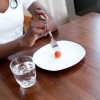 “With concerns about childhood obesity on the rise, the plight of young people with eating disorders such as anorexia nervosa may not be on many people’s minds. However, according to the American Academy of Child and Adolescent Psychiatry, between 5 and 10 million people, including 1% of American teens, have an eating disorder. Anorexia nervosa, an eating disorder characterized by excessive weight loss and severely distorted body image, is one of the most common psychiatric diagnoses in young women.” This 2-page Family Album Radio transcript was written by Jacqueline Endaya and Linda Bobroff, and published by the UF Department of Family Youth and Community Sciences, August 2012.
“With concerns about childhood obesity on the rise, the plight of young people with eating disorders such as anorexia nervosa may not be on many people’s minds. However, according to the American Academy of Child and Adolescent Psychiatry, between 5 and 10 million people, including 1% of American teens, have an eating disorder. Anorexia nervosa, an eating disorder characterized by excessive weight loss and severely distorted body image, is one of the most common psychiatric diagnoses in young women.” This 2-page Family Album Radio transcript was written by Jacqueline Endaya and Linda Bobroff, and published by the UF Department of Family Youth and Community Sciences, August 2012.
http://edis.ifas.ufl.edu/fm373
Instructional Methods for Distance Education (AEC345/WC026)
 Much of the time, teaching with distance education technologies is a matter of adapting the teaching styles and instructional methods teachers have been using for years in the traditional classroom. This 5-page fact sheet applies basic teaching principles to distance education technologies. Written by Ricky W. Telg, and published by the UF Department of Agricultural Education and Communication, September 2012.
Much of the time, teaching with distance education technologies is a matter of adapting the teaching styles and instructional methods teachers have been using for years in the traditional classroom. This 5-page fact sheet applies basic teaching principles to distance education technologies. Written by Ricky W. Telg, and published by the UF Department of Agricultural Education and Communication, September 2012.
http://edis.ifas.ufl.edu/wc026
Solutions for Managing Tomato Culls in Florida Tomato Packinghouses (SL371/SS572)
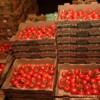 Florida is the single largest producer of fresh-market tomatoes in the United States. Driven by urbanization and generation of large amounts of tomato culls, tomato packers in Florida often struggle to find ways to dispose of culls generated during the cleaning and sanitizing of tomatoes. This 5-page fact sheet provides guidelines for appropriate management practices to increase the use of culls produced in tomato packinghouses in Florida. Written by Gurpal Toor, Maninder Chahal, and Bielinski Santos, and published by the UF Department of Soil and Water Science, September 2012.
Florida is the single largest producer of fresh-market tomatoes in the United States. Driven by urbanization and generation of large amounts of tomato culls, tomato packers in Florida often struggle to find ways to dispose of culls generated during the cleaning and sanitizing of tomatoes. This 5-page fact sheet provides guidelines for appropriate management practices to increase the use of culls produced in tomato packinghouses in Florida. Written by Gurpal Toor, Maninder Chahal, and Bielinski Santos, and published by the UF Department of Soil and Water Science, September 2012.
http://edis.ifas.ufl.edu/ss572
Production of Miscanthus x giganteus for Biofuel (SSAGR292/AG297)
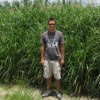 The bioenergy industry has primarily used Miscanthus for combustion in power plants. It has desirable properties of low water and ash contents following a dry-down period before harvest. Current research is focused on its potential as a biomass crop for direct combustion and for lignocellulosic conversion to ethanol and other biofuels. This 3-page fact sheet was written by John Erickson, Curtis Rainbolt, Yoana Newman, Lynn Sollenberger, and Zane Helsel, and published by the UF Department of Agronomy, September 2012.
The bioenergy industry has primarily used Miscanthus for combustion in power plants. It has desirable properties of low water and ash contents following a dry-down period before harvest. Current research is focused on its potential as a biomass crop for direct combustion and for lignocellulosic conversion to ethanol and other biofuels. This 3-page fact sheet was written by John Erickson, Curtis Rainbolt, Yoana Newman, Lynn Sollenberger, and Zane Helsel, and published by the UF Department of Agronomy, September 2012.
http://edis.ifas.ufl.edu/ag297
Agricultural Management Options for Climate Variability and Change: High-Residue Cover Crops (AE488)
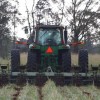 While decision making in agriculture involves many aspects beyond climate, including economics, social factors, and policy considerations, climate-related risks are a primary source of yield and income variability. This 4-page fact sheet focuses on the use of high-biomass winter cover crops to improve production systems. Written by Joel Love, Jed Dillard, Kirk Brock, Daniel Dourte, and Clyde Fraisse, and published by the UF Department of Agricultural and Biological Engineering, August 2012.
While decision making in agriculture involves many aspects beyond climate, including economics, social factors, and policy considerations, climate-related risks are a primary source of yield and income variability. This 4-page fact sheet focuses on the use of high-biomass winter cover crops to improve production systems. Written by Joel Love, Jed Dillard, Kirk Brock, Daniel Dourte, and Clyde Fraisse, and published by the UF Department of Agricultural and Biological Engineering, August 2012.
http://edis.ifas.ufl.edu/ae488
Protecting Your Family from Unintentional Poisoning (FAR5002/FM366)
 “In 2004, more than 2.4 million exposures to human toxins were reported to poison control centers in the United States. Almost all of them occurred in homes, and 85% percent of poison exposures were unintentional. More than half of them involved children under six years old. As a parent, that is a very frightening statistic.” This 2-page Family Album Radio transcript was written by Donna Davis, and published by the UF Department of Family Youth and Community Sciences, August 2012.
“In 2004, more than 2.4 million exposures to human toxins were reported to poison control centers in the United States. Almost all of them occurred in homes, and 85% percent of poison exposures were unintentional. More than half of them involved children under six years old. As a parent, that is a very frightening statistic.” This 2-page Family Album Radio transcript was written by Donna Davis, and published by the UF Department of Family Youth and Community Sciences, August 2012.
http://edis.ifas.ufl.edu/fm366
Colletotrichum Crown Rot (Anthracnose Crown Rot) of Strawberries (PP238/PP156)
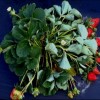 Colletotrichum crown rot is caused by the fungi Colletotrichum gloeosporioides and Colletotrichum fragariae. Both pathogens kill strawberry plants by aggressively invading crown tissue. Crown rot is a serious disease in warm production regions, such as those in the southeastern United States. This 3-page fact sheet was written by Natalia A. Peres and Steven J. MacKenzie, and published by the UF Department of Plant Pathology, September 2012.
Colletotrichum crown rot is caused by the fungi Colletotrichum gloeosporioides and Colletotrichum fragariae. Both pathogens kill strawberry plants by aggressively invading crown tissue. Crown rot is a serious disease in warm production regions, such as those in the southeastern United States. This 3-page fact sheet was written by Natalia A. Peres and Steven J. MacKenzie, and published by the UF Department of Plant Pathology, September 2012.
http://edis.ifas.ufl.edu/pp156
Anthracnose Fruit Rot of Strawberry (PP207/PP130)
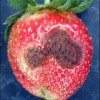 Anthracnose fruit rot is an important disease for strawberry worldwide. Lesions appear as dark, sunken spots on infected fruit. This 4-page fact sheet was written by James C. Mertely and Natalia. A. Peres, and published by the UF Department of Plant Pathology, September 2012.
Anthracnose fruit rot is an important disease for strawberry worldwide. Lesions appear as dark, sunken spots on infected fruit. This 4-page fact sheet was written by James C. Mertely and Natalia. A. Peres, and published by the UF Department of Plant Pathology, September 2012.
http://edis.ifas.ufl.edu/pp130
Conservation Subdivision: Post-construction Phase – Urban Trees Can Reduce Household Carbon Footprint (WEC321/UW366)
 During the post-construction phase, the conservation and planting of native trees in individual yards and open spaces can reduce household and neighborhood carbon footprints. This 5-page fact sheet discusses the importance of urban trees and their role in mitigating for climate change by avoiding carbon emissions and removing carbon dioxide from the atmosphere. Written by Richard Vaughn, Mark Hostetler, and Francisco Escobedo, and published by the UF Department of Wildlife Ecology and Conservation, June 2012.
During the post-construction phase, the conservation and planting of native trees in individual yards and open spaces can reduce household and neighborhood carbon footprints. This 5-page fact sheet discusses the importance of urban trees and their role in mitigating for climate change by avoiding carbon emissions and removing carbon dioxide from the atmosphere. Written by Richard Vaughn, Mark Hostetler, and Francisco Escobedo, and published by the UF Department of Wildlife Ecology and Conservation, June 2012.
http://edis.ifas.ufl.edu/uw366
Enviroshopping for Teens (FCS8756/FY342)
 Every day, we make choices that impact our environment. This 3-page fact sheet will help you make environmentally friendly choices whenever you make purchases and encourage you to take a second look at items before throwing them away. Written by Linda B. Bobroff and R. Elaine Turner, and published by the UF Department of Family Youth and Community Sciences, September 2012.
Every day, we make choices that impact our environment. This 3-page fact sheet will help you make environmentally friendly choices whenever you make purchases and encourage you to take a second look at items before throwing them away. Written by Linda B. Bobroff and R. Elaine Turner, and published by the UF Department of Family Youth and Community Sciences, September 2012.
http://edis.ifas.ufl.edu/fy342
Mantener los alimentos seguros: Escoger y usar termometros en casa (FCS1083Span/FY1296)
 “La cocción apropiada de los alimentos a la temperatura interna segura es una de las formas más efectivas de prevenir las enfermedades transmitidas por los alimentos. Existe una gran variedad de termómetros para comprar y seleccionar el correcto para cuando cocine en casa de manera que usted y su familia estén seguros. Esta publicación proveerá información específica de cómo usar los diferentes termómetros en diferentes alimentos.” This 3-page fact sheet was written by Claudia Peñuela, Amarat Simonne e Isabel Valentin-Oquendo, and published by the UF Department of Family Youth and Community Sciences, September 2012.
“La cocción apropiada de los alimentos a la temperatura interna segura es una de las formas más efectivas de prevenir las enfermedades transmitidas por los alimentos. Existe una gran variedad de termómetros para comprar y seleccionar el correcto para cuando cocine en casa de manera que usted y su familia estén seguros. Esta publicación proveerá información específica de cómo usar los diferentes termómetros en diferentes alimentos.” This 3-page fact sheet was written by Claudia Peñuela, Amarat Simonne e Isabel Valentin-Oquendo, and published by the UF Department of Family Youth and Community Sciences, September 2012.
http://edis.ifas.ufl.edu/fy1296
Teen Binge Drinking (FAR1201/FM362)
 “Raising teenagers is a tough job. I know I’m not the only mom who worries about the challenges our children face, including the issue of teenage drinking. There are many reasons to be concerned: Youth who use alcohol are at greater risk for unprotected sexual intercourse, coerced sexual activity, use of marijuana, and poor academic performance.” This 2-page Family Album Radio transcript was written by Suzanna Smith and published by the UF Department of Family Youth and Community Sciences, August 2012.
“Raising teenagers is a tough job. I know I’m not the only mom who worries about the challenges our children face, including the issue of teenage drinking. There are many reasons to be concerned: Youth who use alcohol are at greater risk for unprotected sexual intercourse, coerced sexual activity, use of marijuana, and poor academic performance.” This 2-page Family Album Radio transcript was written by Suzanna Smith and published by the UF Department of Family Youth and Community Sciences, August 2012.
http://edis.ifas.ufl.edu/fm362